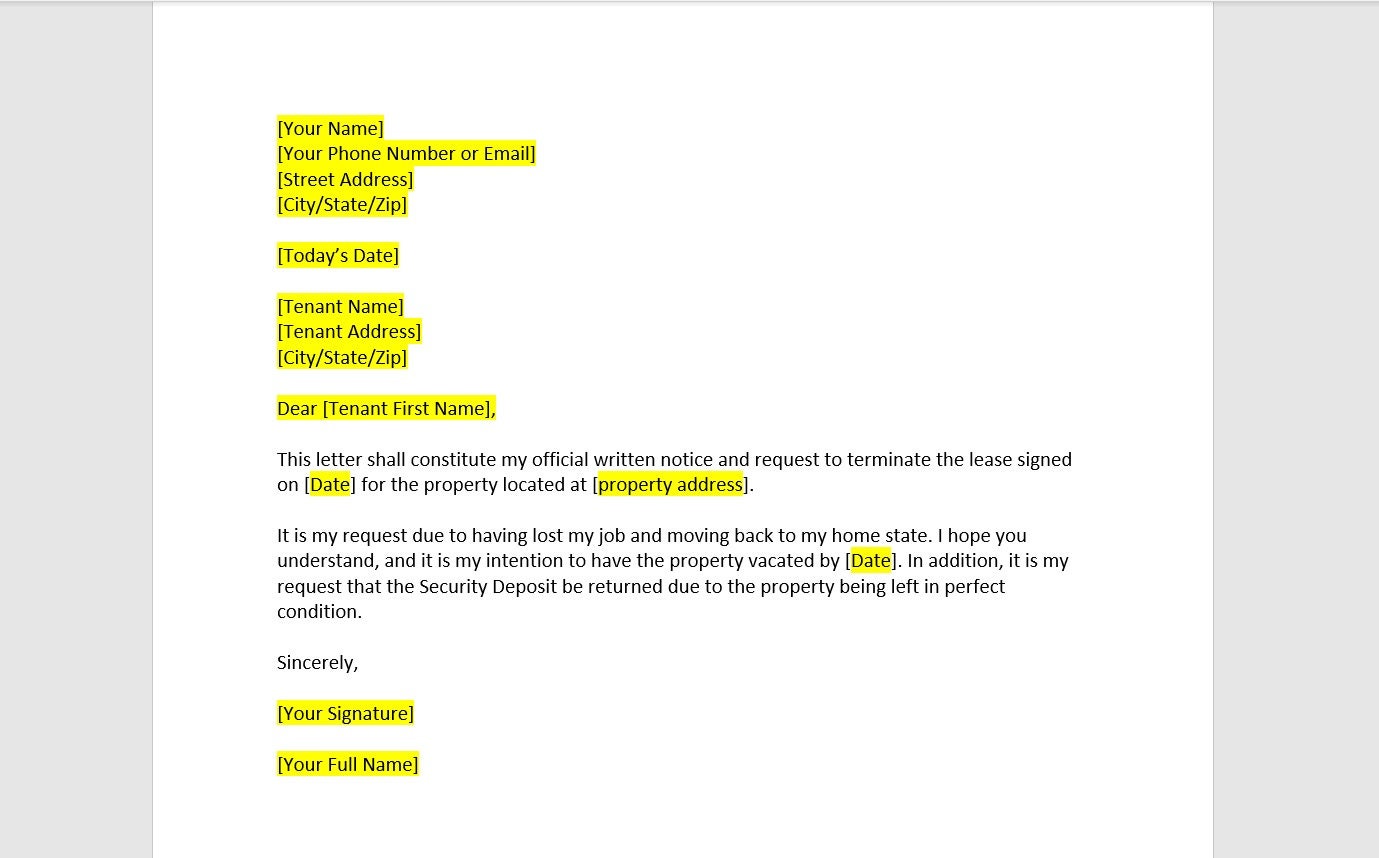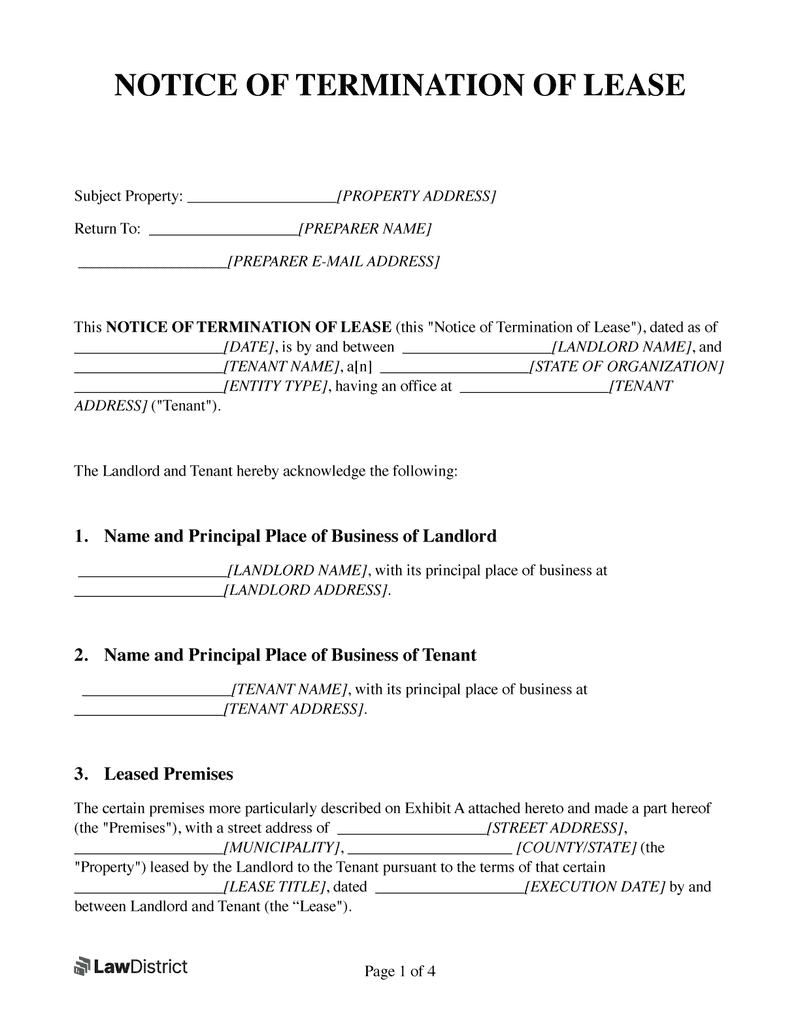Lease termination documentation
Documenting Lease End: Essential Steps for Termination

Documenting Lease End: Essential Steps for Termination
Lease termination is a significant process that requires careful documentation to ensure a smooth and legally sound transition for both landlords and tenants. This article outlines the essential steps and considerations for proper lease termination documentation.
Understanding the Importance of Documentation
Documentation serves as a crucial record of the lease termination process. It provides clarity on the terms agreed upon by both parties and minimizes the risk of disputes or misunderstandings. Comprehensive documentation ensures that the rights and responsibilities of both landlords and tenants are clearly outlined.
1. Written Notice of Termination
The first step in lease termination documentation is providing written notice to the other party. Whether it’s the landlord notifying the tenant or vice versa, the written notice should clearly state the intention to terminate the lease and include the proposed termination date. This formal communication sets the process in motion.
2. Acknowledgment of Notice
Upon receiving the written notice, the other party should acknowledge receipt. This acknowledgment can be a simple written confirmation that the notice has been received, ensuring that both parties are aware of the impending termination. This step helps in establishing a clear timeline for the process.
3. Inspection and Property Walkthrough
Before the actual termination date, conducting a thorough inspection and walkthrough of the property is essential. Documenting the condition of the property at this stage helps identify any pre-existing damages or issues. Both parties should be present during this inspection, and their observations should be recorded.
4. Agreement on Property Condition
Based on the inspection, landlords and tenants should come to an agreement on the property’s condition. Any discrepancies in assessing damages or necessary repairs should be discussed and documented. This agreement forms the basis for determining the return of security deposits and handling any financial aspects related to property condition.
5. Settlement of Outstanding Dues
Lease termination often involves settling outstanding financial matters. Both parties should document any pending rent payments, utility bills, or other dues. This documentation ensures that there is a clear record of financial transactions and helps prevent disputes over payment obligations.
6. Return of Security Deposit
If a security deposit was collected at the beginning of the lease, the process for its return should be clearly documented. Any deductions for damages or unpaid rent should be outlined in writing, and both parties should agree on the final amount to be returned. This documentation is crucial for financial transparency.
7. Finalization of Lease Termination Agreement
A comprehensive lease termination agreement should be drafted, outlining the agreed-upon terms and conditions for the termination. This document typically includes details on the termination date, property condition, financial settlements, and any other relevant agreements reached between the landlord and tenant.
8. Signatures of Both Parties
To validate the lease termination documentation, both parties should sign the final agreement. This formalizes their agreement and acknowledges their understanding and acceptance of the terms outlined in the documentation. Signatures add a layer of legal authenticity to the entire
Streamlining Lease Termination Documents: A Guide for Landlords

Streamlining Lease Termination Documents: A Guide for Landlords
Efficient and well-documented lease termination is essential for a smooth transition in the landlord-tenant relationship. In this guide, we’ll explore the importance of proper lease termination documentation and provide insights into streamlining the process for landlords.
Understanding the Significance of Documentation
Clear and comprehensive documentation is the cornerstone of a successful lease termination. Proper documentation not only protects the interests of both landlords and tenants but also ensures a transparent and legally sound process. Understanding the significance of documentation sets the stage for a seamless termination experience.
Providing Clear Notice and Communication
Initiating the lease termination process begins with providing clear notice to the tenant. Clearly communicate the termination terms, including the effective date and any specific requirements. Open and transparent communication sets the foundation for a cooperative and informed approach to lease termination.
Documenting Lease Termination Terms in Writing
Once the termination terms are communicated, it’s crucial to document them in writing. Prepare a formal lease termination letter outlining the details discussed with the tenant. Include information such as the termination date, any agreed-upon conditions, and instructions for the tenant regarding move-out procedures.
Establishing Move-Out Expectations
Clearly outline move-out expectations in the termination documentation. Specify conditions related to property cleanliness, repairs, and the return of keys. Establishing these expectations in writing helps prevent misunderstandings and provides a reference point for both parties during the move-out process.
Conducting a Final Property Inspection
A thorough final property inspection is a key component of lease termination. Document the property’s condition through photographs and written notes. This inspection helps identify any damages or issues that need addressing and provides a basis for determining the return of the tenant’s security deposit.
Addressing Security Deposit Refunds
Clearly outline the process for refunding the tenant’s security deposit in the termination documentation. Specify any deductions for damages beyond normal wear and tear and the timeline for returning the deposit. Providing this information in writing ensures transparency and helps avoid disputes over security deposit refunds.
Including Legal Compliance Information
Lease termination documentation must adhere to legal requirements. Include information about compliance with local and state laws governing lease terminations. This may include details about notice periods, tenant rights, and any specific legal obligations the landlord must fulfill during the termination process.
Offering Assistance and Resources
In the termination documentation, extend an offer of assistance and provide resources for the tenant. Offer guidance on cleaning and moving out procedures, and provide contact information for any necessary utility transfers. Demonstrating a helpful attitude contributes to a positive termination experience.
Promptly Acknowledging Tenant Compliance
Once the tenant has complied with the terms outlined in the termination documentation, promptly acknowledge their compliance. Send a confirmation letter or email, expressing appreciation for their cooperation and confirming the completion of the lease termination process.
Archiving Documentation for Future Reference
Finally, archive all lease termination documentation for future reference. Store electronic and hard copies securely, ensuring easy access if needed. Proper documentation serves as a valuable record
